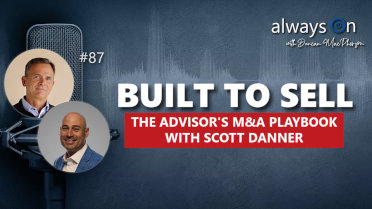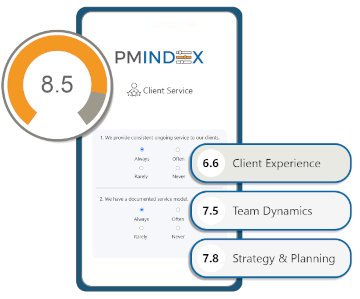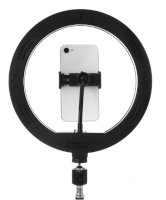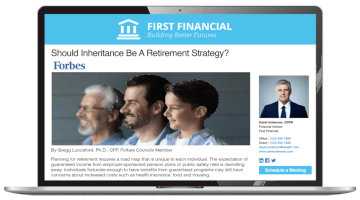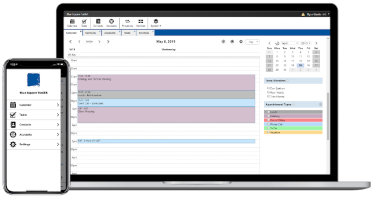Is There a Fit?

I'm going to let you in on a little secret. Many of the most successful financial advisors I know have increased their persuasive impact by radically altering their sales process with prospective clients. These advisors (many of whom used to be salespeople) have evolved into professional consultants; they now strive to attract new clients rather than chase them. Instead of using a sales process to close business, they use a fit process to fast-track new clients to advocates.
Shake it Up!
When I consult with an advisor as part of our Pareto System Coaching process, one of the first things I'll do is scrutinize the approach he or she uses for prospective client meetings. I then ask these two questions:
- "Who views it as an accomplishment when you bring on a new client? Are you celebrating because you've closed them or are they excited because they've qualified to work with you?"
- "Do you ask clients to buy investments from you or do you ask them to buy-into a relationship with you?"
For many advisors, nowhere in their on-boarding process does a new client need to convince the advisor that there is a good fit. It's the advisor doing all the convincing and in the process their salesmanship is actually undermining the lifetime value of the relationship.
When you sell to someone, there is often a sense of anticlimax for the new client and perhaps even a chance that they are feeling some degree of buyer's remorse. The advisor cannot be the only one who gets excited when a new relationship is formed; the client has to have a sense of accomplishment too.
This is one reason that we suggest turning your prospective client process upside down. Instead of pushing prospective clients into making a decision, you can engage and then empower them. Our time-tested, up-front approach has been proven to attract new clients. It combines the use of an agenda with a process that highlights the importance of a relationship based on "fit" rather than one based on pressure and urgency.
When a prospective client approaches your office for the first time, two emotions are front and center: anticipation and apprehension. The anticipation stems from the person's curiosity about you. It is possible for example, that the prospective client is meeting with you because someone spoke highly of you and recommended your services. Keep in mind, every prospective client you meet already has a financial advisor, and is probably meeting with you because he or she is to some degree disillusioned with that advisor. As a result, the prospect is seeking an alternative. At the same time, he or she is apprehensive, fearing change, fearing the unknown and fearing the expected "sales-pitch". People are sold to each and every day. Consequently, they put up walls when they are in a selling encounter. It's a natural self-defense mechanism.
Don't Meet Their Expectations
Most prospective clients walk into a meeting bracing for a presentation in which you strongly promote your products and services. If they assume that your ultimate goal -- your hidden agenda -- is to sell them something, why feed that expectation? Instead, you can do something completely unexpected.
When you meet with a prospective client, shake hands, exchange pleasantries, then sit down and slide a leather portfolio that includes a note pad and pen as well as a printed agenda across the table for him or her to examine. Then launch into the formal segment of the meeting with a personalized version of this opening statement:
"Mr./Mrs. Prospective Client, let me begin by saying how much I appreciate you taking the time to be here today. I know your time is valuable and my goal is to ensure that you feel this meeting was a wise investment. Now, I know you are here primarily to assess my financial planning credentials and approach, and to get to know more about my firm. I will share this information with you during this initial meeting. I wanted to meet with you to get to know you and to determine if we will have good chemistry over the lifetime of our potential relationship. Therefore, because a relationship like this is important for both of us, no one will be making any commitments today. At the end of our meeting, as part of my process, I'll be getting together with my team to discuss your situation, and we'll discuss our compatibility. I'll then call you in 48 hours to let you know if we think we'd be a good fit for you. You can take some time to decide if there is a fit as well. Is that fair?"
A statement like this is a refreshing departure from the usual selling tone of a first meeting. And it has positive results. You will immediately see the prospective client's body language change. Tension and apprehension will melt away when he or she realizes that this is not a typical selling encounter. The prospect was probably expecting the usual selling process, where the meeting builds to the point at which the prospect is asked to "buy" investments. Imagine how much better your potential client will feel when you instead highlight the importance of "buying-into" a meaningful relationship. You will instantly disarm and impress. After all, stewardship is more attractive and persuasive than salesmanship.
The leather portfolio is a powerful and tangible tool that they can hold and take away with them that anchors them to your professionalism. Using an agenda at these meetings is so important because it instantly gives the prospective client a tangible track to follow and it eliminates any fear that you will introduce unwelcome surprises. An agenda is an outline with talking points with prospective client's name on the top and a series of bullets which highlight the main topics that you will discuss at the meeting, things like:
- Getting to Know Each Other
- An Introduction to My Firm
- An Overview of My Asset Management Philosophy and Process
- What's Important to You?
- The Uniqueness of My approach
- Is There a Fit?
It gives the clients a feeling of certainty. The agenda also benefits you, because it establishes where the meeting will go next, so you can actually listen to the prospective client. The agenda also makes it easy for you to explain some of the abstract financial planning concepts because it provides specific talking points. Remember, you are in the knowledge for profit business. You think for a living. You aren't selling something tangible; you are promoting the promise of a comfortable future insulated from external circumstances. You need all the help you can get to demystify what you do; after all, it's not what you say that matters, it's what the prospective client hears and internalizes.
Is There a Fit?
The most important bullet point on the agenda is the last one, which should always be "Is there a fit?" When you get to this point in the meeting, you simply thank the prospective client for attending, and remind him or her that you will now meet with your team. Also confirm that you will contact him or her in 48 hours.
At this point, one of two things will happen. In some cases, the prospective client will thank you and tell you they look forward to hearing from you. More often than not, however, the prospective client will try to close you; they will try to convince you that you should take action right now. I'm not making this up. Because of your forthright and disarming process, the prospective client will have developed a high degree of self-motivation and predisposition. He or she will likely say to you, "I don't need to think about it. I'm confident that there is a good fit and I'm prepared to move forward right now."
So how should you respond to this statement? We tell advisors to say this:
"Mr./Mrs. Prospective Client, I appreciate your enthusiasm however if that is how you feel, that won't change in 48 hours. This is important, so take your time. And this is a process we like to follow so let me discuss it with my team."
Ultimately, you live by the rules you set. If you cave in to the prospective client's request to move ahead immediately, then your entire meeting structure becomes nothing more than a tactic, a gimmick, and you seriously undermine your integrity. There is only one situation in which I would suggest that you could make an exception: if a great client has referred the prospective client to you, and if the prospective client perfectly meets your Ideal Client Criteria based on Assets, Attitude and Advocacy, you can consider making the exception. If you do so, be sure to make it clear that this is an exception. Otherwise, delay instant gratification and stick with the process.
This process empowers a prospective client to come to his or her own conclusions, and to feel great about coming on board with you. Furthermore, you are fast tracking the process of turning a new client into an advocate who is competitor-proof and predisposed to referring other prospective clients to you.
It's funny, when I do presentations on this topic, invariably there will be an advisor in the room who has worked with us in the past and has adopted our approach. Like clockwork, when I finish talking, the advisor will stand up and say, "He's right, this really works!" To that, I respond by saying, "It works because it's right."
Continued Success!
Contributed by: Duncan MacPherson


